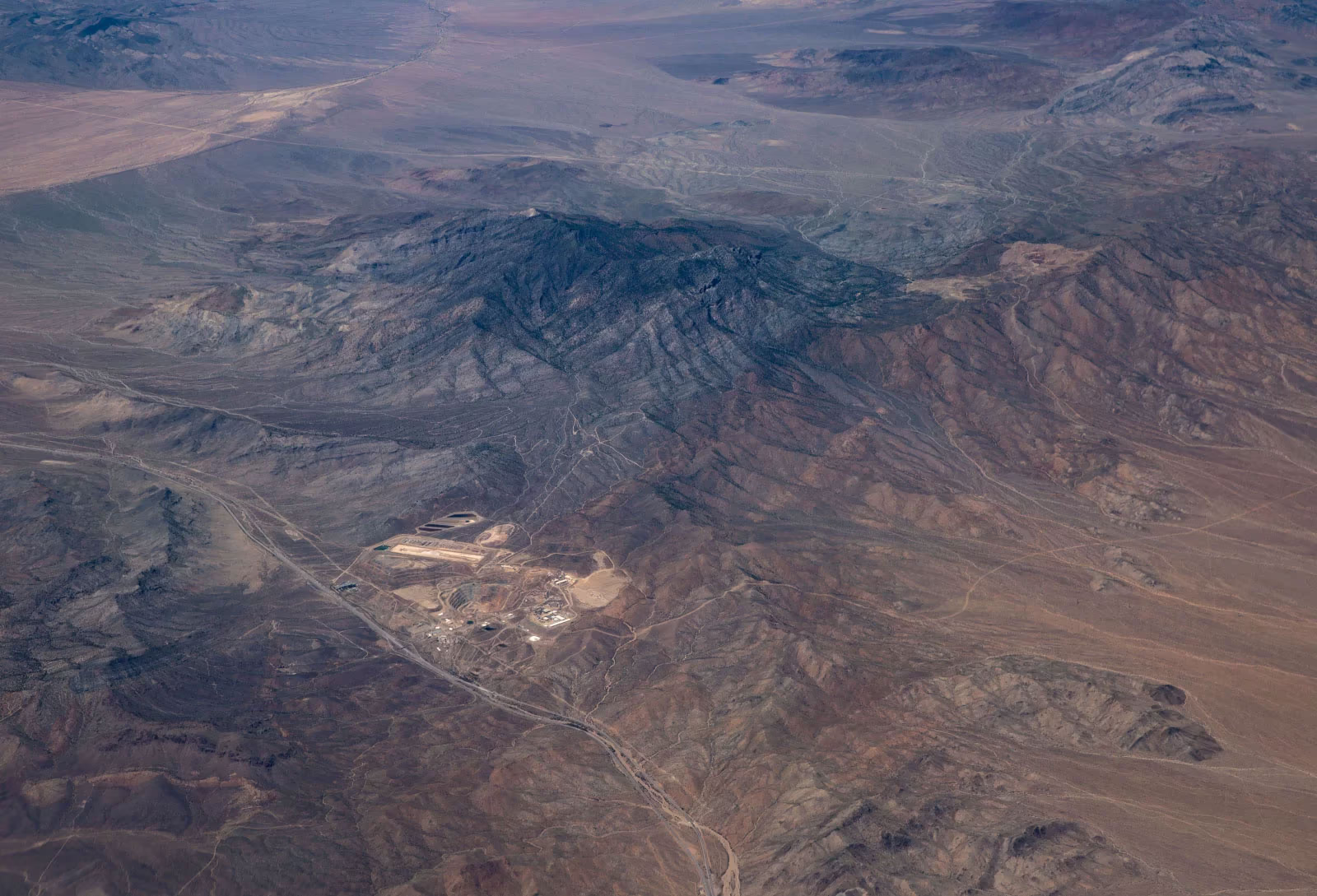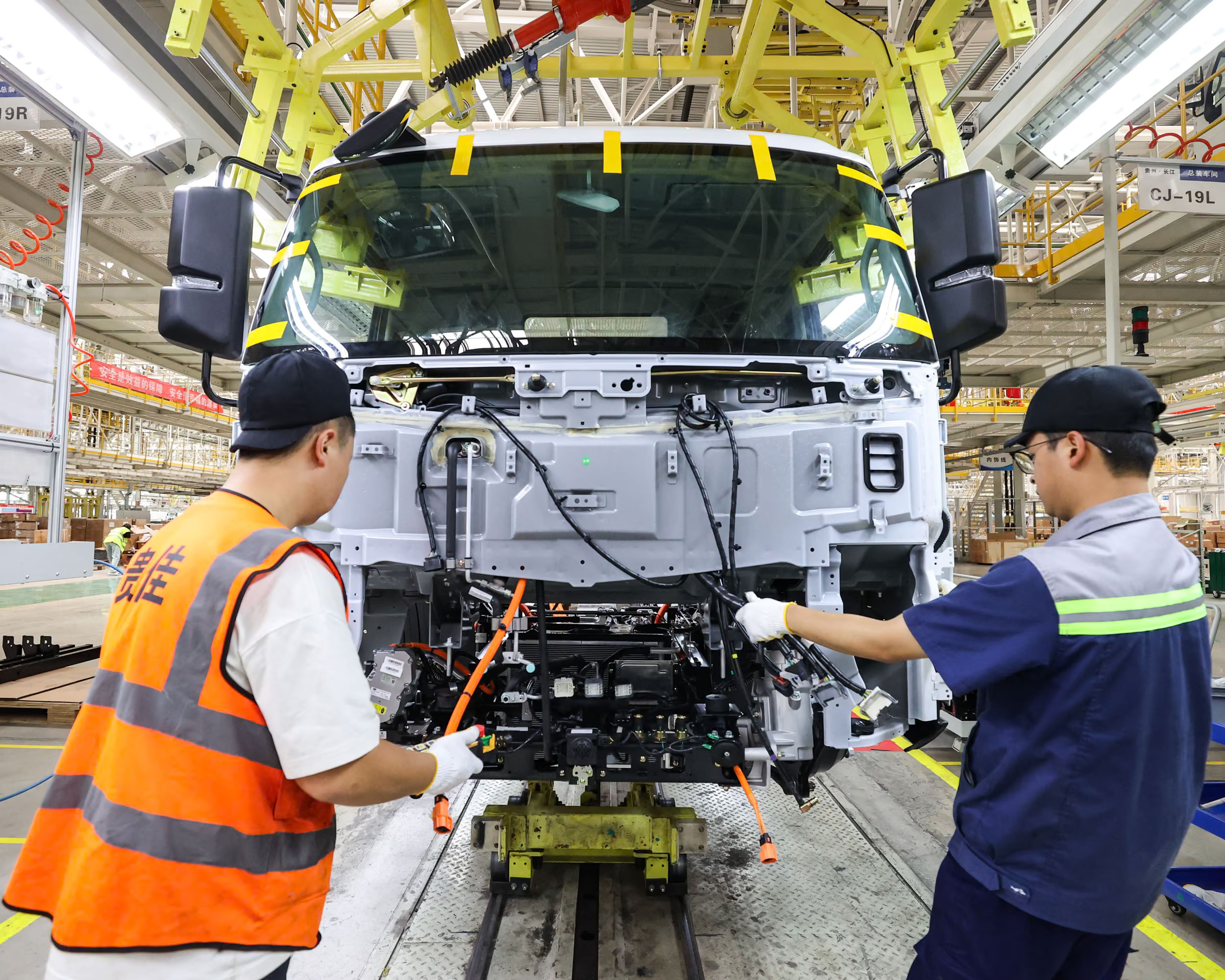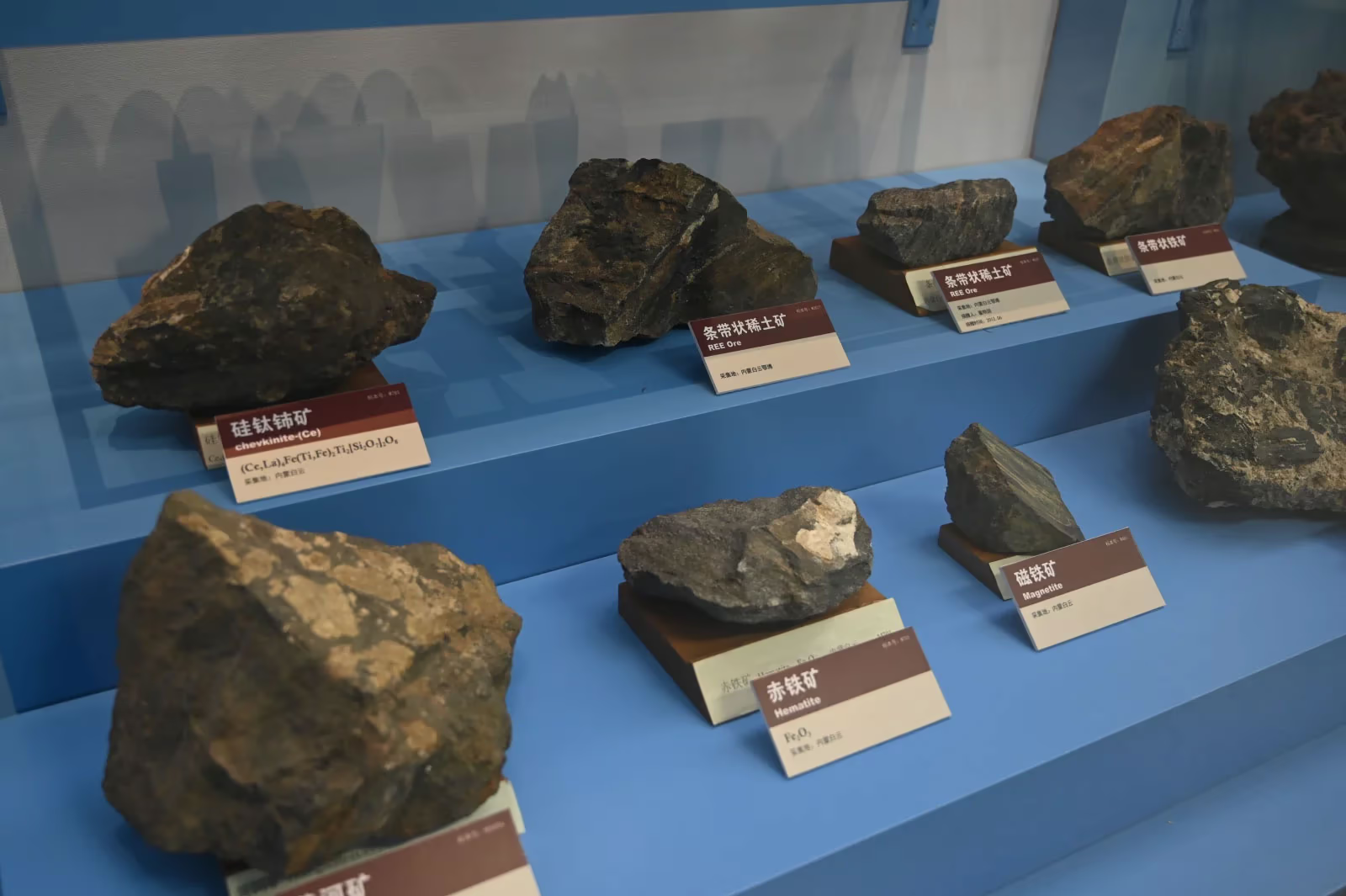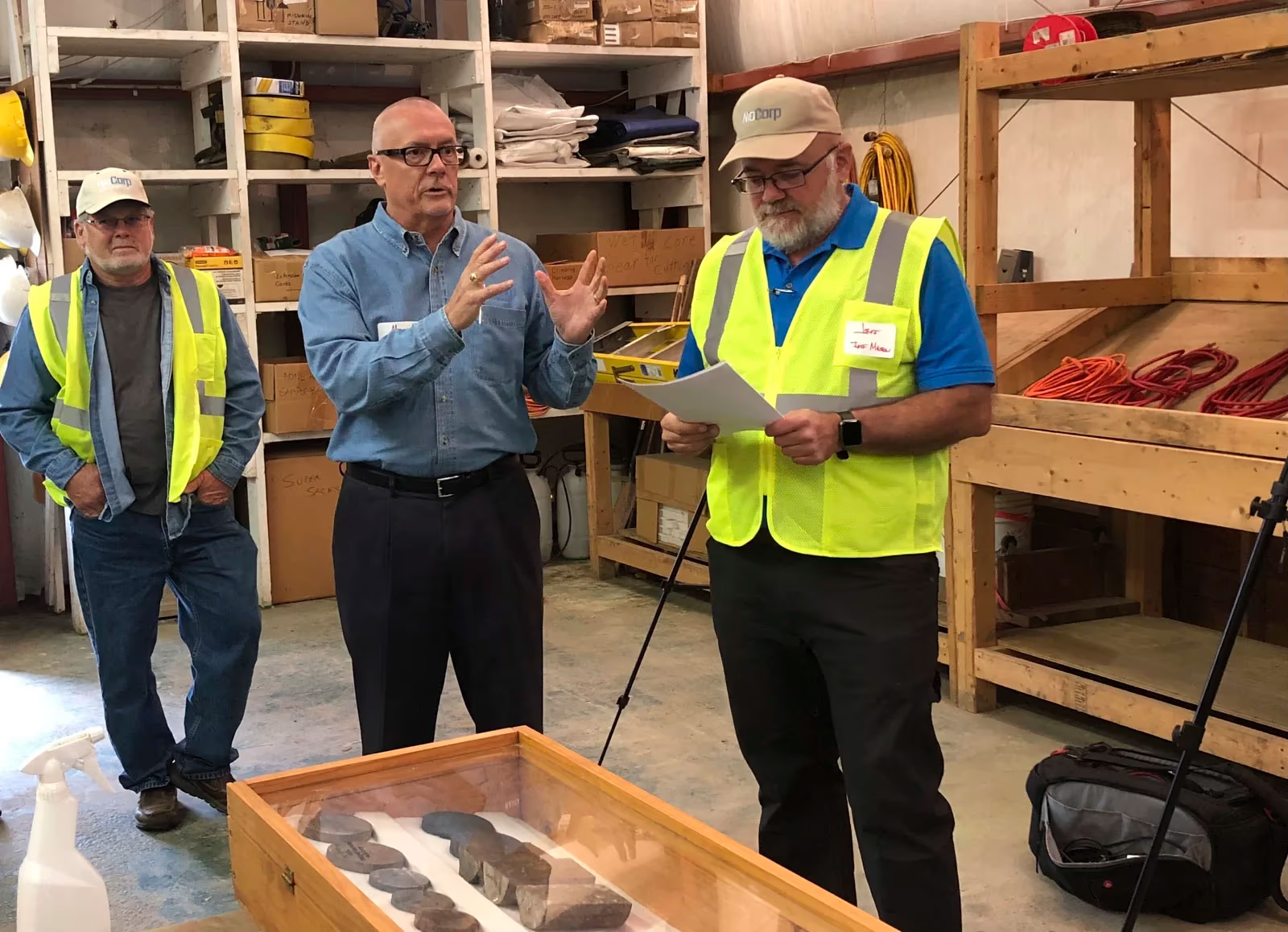In a World War II-era underground bunker on the outskirts of Frankfurt, investment manager Louis O’Connor safeguards the most valuable asset his company owns. Inside the secure vault: rare earth elements.
"The walls are three and a half meters thick, there are armored doors and armed guards—it’s no joke," says O’Connor, CEO of Strategic Metals Invest, a firm that offers private investors access to physical reserves of rare earth metals.
Although many of the so-called rare earth elements are not particularly scarce and are mined across the globe, nearly all of the processing takes place in China. These metals are used in everything from smartphones and audio systems to military technology, including fighter jets.
When Beijing tightened control over the supply chains of seven rare earth elements this spring, O’Connor felt the impact almost immediately. One investor visiting the company’s vault offered to purchase the entire stock of terbium and dysprosium—two especially valuable heavy rare earths—on the spot.
That moment, O’Connor says, made clear just how deeply China's dominance shapes the industry.
"They’re essentially running a tap—if they want it open, it flows; if not, they shut it off," he says, commenting on China’s new policy.
Control over supply chains has become a powerful lever for Beijing in its trade standoff with the United States. Just weeks after China introduced mandatory licensing for foreign buyers of rare earths in early April, several American and European firms reported having to halt production. Access to Chinese raw materials quickly became one of the key flashpoints in trade talks between Washington and Beijing this spring.

The Mountain Pass rare earth mine and processing facility, owned by MP Materials, photographed from an aircraft at 37,000 feet. Mountain Pass, California. September 1, 2023.
China’s path to its current dominance was neither swift nor straightforward. Building an export control system with such precision took decades—and involved a great deal of trial and error.
How China Took Over an Industry Once Led by the U.S.
In the second half of the 20th century, the United States dominated the global rare earth market, following the discovery of a major deposit in Mountain Pass, California, by geologists in 1949.
China recognized the strategic value of these resources early on and began showing interest in the 1960s. According to Mark Smith, former CEO of Molycorp—the company that operated the Mountain Pass processing facility—Chinese delegations visited the site repeatedly.
"We gave them tours, explained everything we were doing, let them take pictures—whatever they wanted. And they took it all back to China," recalls Smith, who personally led such visits in the 1980s and 1990s.
Chinese processors eventually upgraded their technologies, and thanks to cheap electricity, hundreds of profitable mining and refining companies quickly emerged—primarily serving the domestic market.
Fierce Competition and Pricing Chaos in the Early Years
In its early phase, however, the industry’s growth in China was marked by chaos and a lack of regulation. Hundreds of small private mines and refineries engaged in cutthroat competition, often undercutting one another and driving down their own margins.
"They’re driving prices down against themselves," says Chris Ruffle, an investor with decades of experience in China, including in the metals sector. "They’re effectively destroying their own market."
"China’s rare earth metals are sold not at 'rare earth' prices, but at the price of 'earth'," lamented then–Industry Minister Xiao Yaqing in 2021.
Made in China

China’s Economy Is Growing Faster Than Expected—For Now
Falling Confidence, Deflation, and Tariff Risks Threaten Momentum in the Second Half of the Year

China Prepares for a Prolonged Trade War
Beijing Builds Economic Resilience and Bets on Domestic Demand

A Trade War With China That Is Nearly Impossible to Win
The U.S. Is Confronting the Consequences of Its Own Strategy
Expansion at the Expense of the Environment: How China Scaled Up Mining
In their push to strengthen China’s position in the rare earth sector, producers unleashed large-scale, often unregulated extraction—with devastating consequences for the environment.
In the early 2000s, investor Chris Ruffle—who spent years working in China, including in the metals industry—visited a private processing plant in Jiangsu province. "A faint haze of smoke gave them away," he recalls. Nearby, vast piles of toxic tailings—metallic waste from ore processing—lay exposed.
The most destructive impact came from artisanal mining in the country’s south, home to the richest deposits of “heavy” rare earth elements.
"They were literally hacking away at the hillsides with pickaxes, shovels, and hatchets, digging pits in the ground—no lining whatsoever—and pouring in 20 liters of sulfuric or hydrochloric acid," recalls James Smith, who traveled frequently to China at the time. "Then they’d just wait. When the rains came, all that acid would run downhill."
This kind of mining left behind contaminated soil and poisoned groundwater. Residents of nearby areas occasionally protested against the mines, but the industry generated steady revenues for local authorities, who often ignored Beijing’s orders to shut down the dirtiest operations.
A 2012 investigative report by Chinese media compared the rare earth sector to drug trafficking. “There are generally two types of people in this business: those who’ve just gotten out of prison, and those who can get someone out,” the article stated. “People who aren’t afraid of dying, and local bosses—all of them are involved.”
From Quotas to Smuggling: How Regulation Backfired
By the late 1990s, weary of price wars and environmental destruction, Beijing introduced quotas on the mining and export of rare earths. The aim was to encourage higher-value-added processing, curb pollution, and shield the sector from foreign pressure.
But the quotas led to dual pricing: as Rod Eggert of the Colorado School of Mines explains, Chinese buyers had access to cheaper raw materials than their foreign counterparts. At the same time, illicit trade boomed—by the mid-2000s, analysts estimate, as much as 30% of China’s rare earth exports bypassed official channels, mostly to the U.S. and Japan.

Samples of rare earth minerals from the Bayan Obo mining district on display at the Institute of Geology and Geophysics, Chinese Academy of Sciences. Beijing, May 17.
After complaints from Western countries, the World Trade Organization ruled in 2014 that China’s export restrictions violated trade rules. Beijing responded calmly: by then, it had already shifted from controlling volumes to controlling market access.
A Secret War for Control: The Rise of the ‘Big Six’
China’s central government launched a sweeping, often aggressive reform campaign known as “one plus five,” aimed at consolidating the rare earth industry into six major state-approved players. Within the system, it was referred to as a “secret war” on illegal mining.
Starting in 2011, local governments were instructed to carry out surprise inspections of mines, confiscate smuggled ore and byproducts, and—when necessary—demolish illegal facilities with explosives.
"I saw firsthand how the private sector was squeezed out," recalls investor Peter Ruffle.
Four years later, Beijing declared victory: dozens of small companies had been shut down, and the rest merged into six major corporations—most of them state-owned. In China, they are known as the “Big Six.”
Since then, authorities have used these six entities to control both supply volumes and prices.
"There used to be competition between producers, but now prices are almost identical," says Jan Giese, a Frankfurt-based trader. "It’s nearly impossible to hold a tender with genuinely comparable offers."
America Wakes Up: Western Firms Seek a Way Out of Dependence
Unlike nickel or gold, the rare earth market has no independent exchange. As a result, prices are highly sensitive to decisions made by Chinese producers, who can drastically alter output or exports. U.S. mining and refining companies say this instability has deterred investment at home.
"Investors are putting their money into Alphabet, Amazon, and other high-flying assets. Almost nothing is going into mining," says Mark Smith, former CEO of Molycorp.

NioCorp CEO Mark Smith speaks to a group of investors about the prospects for a mine near Elk Creek in southeast Nebraska. October 6, 2021. Smith previously led Molycorp.
Still, some are pressing ahead. Smith’s new venture—NioCorp—is developing mines and refining capacity in Nebraska. Phoenix Tailings, a Massachusetts-based startup, is extracting rare earths from mining waste and already supplies magnets to automakers and defense contractors. The company is now building a second plant in New Hampshire, which it says could meet up to half of the Pentagon’s demand.
"We have to go full throttle if we want to succeed," says co-founder and CEO Nicholas Myers.
For a long time, he says, raising enough capital to compete with China was nearly impossible. That began to change this year, after Beijing introduced export licenses: supply dropped sharply, and American investors began to rethink their assumptions.
"That was the turning point. Executives at carmakers and defense contractors realized they were wrong to assume China would never cut off supplies," says Myers.
Now that China has done exactly that, interest in the sector is resurging in the U.S. In May, Phoenix Tailings secured major new funding. For the first time in decades, rare earth processing may be coming back to American soil.
